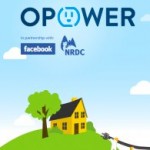 On August 1, Facebook shared the 2011 Carbon Footprint, Energy Mix and Energy Use for its data centers and global offices. The company believes in the power of openness, and hopes that adding another data point to the collective understanding of the social utility industry’s environmental impact will help all others to keep improving.
On August 1, Facebook shared the 2011 Carbon Footprint, Energy Mix and Energy Use for its data centers and global offices. The company believes in the power of openness, and hopes that adding another data point to the collective understanding of the social utility industry’s environmental impact will help all others to keep improving.
This data is just one slice of Facebook’s overall environmental footprint, but it’s an important starting point. Facebook will continue to track and share this data, and also work to understand and share other aspects of its environmental footprint wherever it can. The company’s goal is to understand where it has the most opportunity – and responsibility – to minimize its long-term environmental impact.
Here are the numbers for 2011:
- The total annual carbon footprint per monthly active Facebook user is 269 grams. To put this number into context, one person’s Facebook use for all of 2011 had roughly the same carbon footprint as one medium latte. Or three large bananas. Or a couple of glasses of wine.
 Facebook’s total energy use from office space, data centers and other facilities was approximately 532 million kWh.
Facebook’s total energy use from office space, data centers and other facilities was approximately 532 million kWh.
- Facebook’s greenhouse gas emissions – also known as company’s carbon footprint – from data centers, office space, employee commuting, employee air travel, data center construction and server transportation totaled approximately 285,000 metric tonnes of CO2e (carbon dioxide equivalent, which includes greenhouse gases CO2, CH4, N2O, and HFCs).
- Facebook’s energy mix was 23% clean and renewable, 27% coal, 17% natural gas, 13% nuclear and 20% uncategorized (energy that’s purchased by utilities on the spot market and can include any or all of the above categories).
In the short-term, reducing the company’s environmental impact and significantly altering its energy mix will be challenging. As a fast-growing company, Facebook’s carbon footprint and energy mix may get worse before they get better. When the company brings its Lulea (Sweden) Data Center online in 2014, it expects to see a steady increase in the clean and renewable sources powering the data center operations. And Facebook has set a company goal to derive at least 25% of its energy mix from clean and renewable sources by 2015. The company knows this is going to be a stretch, and it’s still figuring out exactly what it will take to get there.
In the interim, Facebook will maintain its focus on maximizing efficiency in its operations and sharing its strategies for doing so via the Open Compute Project. The company will also continue trying to introduce more clean and renewable energy into the mix that powers its data centers by:
- Including a preference for locations that have access to clean and renewable energy sources in its data center siting policy;
 Engaging with environmental organizations, the industry peers and utility providers to advocate for more clean and renewable energy sources in the overall energy mix available to all consumers;
Engaging with environmental organizations, the industry peers and utility providers to advocate for more clean and renewable energy sources in the overall energy mix available to all consumers;
- Including a renewable energy component to every new data center it builds so as to learn more about what such investments mean for Facebook. The small solar installation at Facebook’s Prineville Data Center is a good example of the kinds of projects it will undertake.
Facebook also realizes that there is great opportunity in the power of this platform and the more than 950 million people who use Facebook. Through its facebook.com/green page and investment in partnerships, Facebook is aiming to drive environmental awareness, education and action. For example, Facebook recently partnered with the Natural Resources Defense Council (NRDC) and Opower to help people track their home energy use, compare it with their friends’ and share tips on how to save energy. As Facebook seeks to track and manage its own energy use, it also wants to make it easy for the people who use the platform to do the same.
Source: Facebook.








